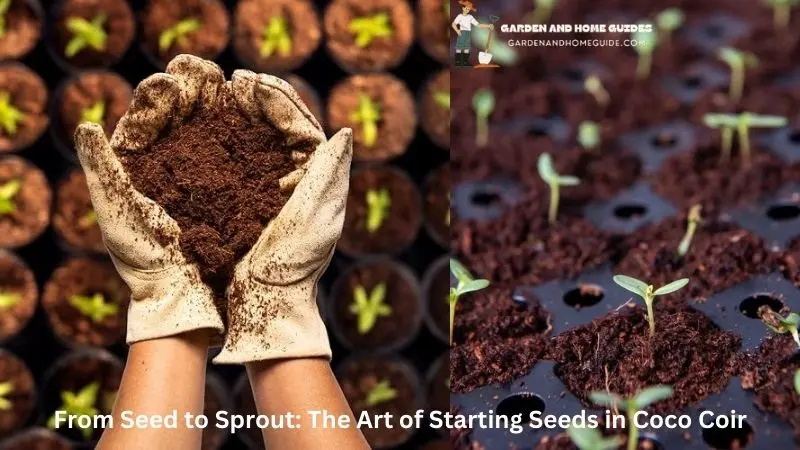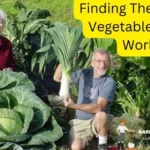Tree Care
Starting Seeds in Coco Coir: From Seed to Sprout
The humble seed, a tiny package of potential, holds the promise of vibrant life. For gardeners, the act of starting seeds is a ritual of hope, a tangible connection to the cycle of growth. While traditional soil remains a popular choice, a growing number of gardeners are turning to coco coir as a sustainable and effective alternative.
This essay of Gardenandhomeguide.com will delve into the world of coco coir, exploring its benefits, examining the process of starting seeds in this versatile medium, and highlighting the advantages it offers over traditional soil.
Coco Coir: A Sustainable and Versatile Growing Medium
Coco coir, derived from the fibrous husk of coconuts, has emerged as a popular choice for gardeners seeking a sustainable and environmentally friendly alternative to peat moss and other traditional soil amendments. Its journey from discarded coconut husk to a valuable growing medium is a testament to the circular economy.
Benefits of Coco Coir:
- Sustainability: Coco coir is a renewable resource, harvested from coconuts, a readily available and abundant crop. Unlike peat moss, which takes thousands of years to form, coco coir is a readily replenishable resource, minimizing environmental impact.
- Water Retention and Drainage: Coco coir boasts excellent water retention properties, ensuring consistent moisture for germinating seeds and young seedlings. Its porous structure also allows for excellent drainage, preventing root rot and promoting healthy growth.
- pH Neutrality: Coco coir has a neutral pH, making it suitable for a wide range of plants. Its pH stability eliminates the need for frequent adjustments, simplifying the growing process.
- Disease Resistance: Coco coir is naturally resistant to pests and diseases, reducing the risk of infestations and promoting healthy plant development.
- Nutrient-Rich: While coco coir is not inherently nutrient-rich, it readily absorbs and retains nutrients, making it an ideal medium for supplementing with fertilizers.
The Process of Starting Seeds in Coco Coir:
Starting seeds in coco coir is a straightforward process, requiring a few essential steps:
- Choosing the Right Coco Coir: Coco coir comes in various forms, including bricks, blocks, and loose fibers. For seed starting, compressed coco coir bricks or blocks are ideal. These are readily available and require minimal preparation.
- Preparing the Coco Coir: To prepare the coco coir, simply soak the brick or block in water until it expands to its full size. Allow it to drain thoroughly before using it as a growing medium.
- Choosing the Right Container: Seed starting trays with individual cells or small pots are excellent choices for starting seeds in coco coir. Ensure the containers have drainage holes to prevent waterlogging.
- Filling the Containers: Fill the containers with the expanded coco coir, leaving about half an inch of space at the top. Gently tamp down the coir to create a firm base.
- Sowing the Seeds: Sow the seeds according to the specific requirements of each plant species. Refer to seed packets or online resources for recommended depth and spacing.
- Watering and Maintaining Moisture: Water the seeds gently, ensuring the coco coir is evenly moistened but not waterlogged. Maintain consistent moisture levels throughout the germination process.
- Providing Light and Warmth: Place the seed trays in a warm, well-lit location. A seed starting mat or heat lamp can provide additional warmth for optimal germination.
- Thinning and Transplanting: Once seedlings have developed a few true leaves, thin them out, leaving the strongest seedlings in each cell. When the seedlings are large enough, transplant them into larger pots or directly into the garden.
Advantages of Coco Coir over Traditional Soil:
- Sterility and Disease Prevention: Coco coir is naturally sterile, minimizing the risk of introducing pests and diseases to young seedlings. This is particularly beneficial for starting seeds indoors, where sterile conditions are crucial.
- Improved Drainage and Aeration: Coco coir’s porous structure promotes excellent drainage and aeration, preventing root rot and encouraging healthy root development. This is especially important for seedlings, which are more susceptible to root damage.
- Consistent Moisture Levels: Coco coir’s ability to retain moisture ensures consistent hydration for germinating seeds and young seedlings, promoting healthy growth and reducing the risk of wilting.
- Lightweight and Easy to Handle: Coco coir is lightweight and easy to handle, making it ideal for seed starting trays and small pots. Its lightweight nature also reduces the risk of back strain during transplanting.
- Environmentally Friendly: Coco coir is a sustainable and environmentally friendly alternative to traditional soil amendments, reducing the reliance on peat moss and other non-renewable resources.
Tips for Success:
- Use a Seed Starting Mix: While coco coir provides a suitable growing medium, adding a seed starting mix can further enhance its nutrient content and improve drainage.
- Monitor Moisture Levels: Regularly check the moisture levels in the coco coir, ensuring it remains consistently moist but not waterlogged.
- Provide Adequate Light: Ensure the seedlings receive sufficient light, either from natural sunlight or artificial sources.
- Harden Off Seedlings: Before transplanting seedlings outdoors, gradually acclimate them to the outdoor environment by exposing them to increasing periods of sunlight and wind.
Conclusion:
Starting seeds in coco coir offers a sustainable and effective alternative to traditional soil, providing a range of benefits for gardeners of all levels. From its environmental friendliness and disease resistance to its excellent water retention and drainage properties, coco coir empowers gardeners to nurture life from its very beginning.
As we embrace the principles of sustainable gardening, coco coir emerges as a valuable tool, allowing us to cultivate vibrant gardens while minimizing our environmental footprint. The journey from seed to sprout, facilitated by the magic of coco coir, is a testament to the interconnectedness of nature and the power of responsible gardening practices.






